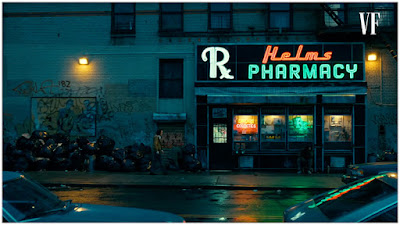Love it or hate it, the deals weekend of the year is here, at least for our American readers. Between Black Friday, Small Business Saturday (yes, that’s a real thing) and Cyber Monday, there are deals aplenty.
We’ve scoured the web for discounts and have rounded up the best cameras, lenses and major accessories deals we could find. We’re going to try our best to update this article throughout the weekend, but if you see a deal that we’ve missed, paste it into a comment. If you’re posting a non-US deal, that’s great! Just flag it clearly.
Please note that the ‘SAVE’ figures below represent discount from original MSRP and we make no guarantees that the discounts listed will be available across the entire holiday weekend. If a deal has expired, let us know in a comment and we’ll remove it from this list.
We’re focusing on deals from three major US online retailers in this article, and if you choose to shop via the Amazon links below, you’ll be supporting DPReview in a small way.
Happy holidays!
Canon
Canon EOS R Camera Body (+ accessory kit) SAVE $ 500
$ 1,799, normally $ 2,299 (Adorama, Amazon, B&H)
Canon EOS Rebel T7i Camera Body (+ accessory kit) SAVE $ 150
$ 599, normally $ 749 (Adorama, Amazon, B&H)
Canon EOS Rebel T6 with 18-55mm IS & 75-300mm (+ accessory kit) SAVE $ 350
$ 399, normally $ 749 (Adorama, Amazon, B&H)
Canon EOS M100 with 15-45mm and 55-200mm STM (+ accessory kit) SAVE $ 400
$ 549, normally $ 949 (Adorama, Amazon, B&H)
Canon PowerShot G7 X Mark II (+ accessory kit) SAVE $ 100
$ 599, normally $ 699 (Adorama, Amazon, B&H)
Canon EF 70-200mm F2.8L IS III USM with Tripod & head SAVE $ 300
$ 1,799, normally $ 2099 (Adorama) B&H also has the lens for $ 1,799, without the tripod.
Canon Speedlite 430EX III-RT SAVE $ 100
$ 199, normally $ 299 (Adorama, Amazon, B&H)
Fujifilm
Fujifilm X-Pro2 Body SAVE $ 400
$ 1,299, normally $ 1,699 (Adorama, Amazon, B&H)
Fujifilm X-Pro2 with XF 23mm F2, Graphite (+ accessory kit) SAVE $ 700
$ 1,599, normally $ 2,299 (Adorama, B&H)
Fujifilm X-T20 with XF 18-55mm F2.8-4 R (+ accessory kit) SAVE $ 200
$ 799, normally $ 999 (Adorama, Amazon, B&H)
Fujifilm X-E3 Body, Black (+ accessory kit) SAVE $ 200
$ 499, normally $ 699 (Adorama, Amazon, B&H)
Fujifilm XF 80mm F2.8 R LM OIS WR Macro (+ accessory kit) SAVE $ 250
$ 949, normally $ 1,199 (Adorama, Amazon, B&H)
Fujifilm XF 8-16mm f2.8 R LM WR (+ accessory kit) SAVE $ 200
$ 1,799, normally $ 1,999 (Adorama, Amazon, B&H)
Fujifilm XF 100-400mm F4.5-5.6 R LM OIS WR (+ accessory kit) SAVE $ 200
$ 1,699, normally $ 1,899 (Adorama, Amazon, B&H)
Nikon
Nikon D850 Body SAVE $ 500
$ 2,796.95, normally $ 3,296.95 (Adorama [includes Nikon MB-D18 Battery Grip and FP Zoom Li-on X R2 TTL Flash], B&H [includes free accessory kit])
Nikon D750 Body: SAVE $ 700
$ 996.95, normally $ 1,696.95 (Adorama [includes Slik Pro II 4-section tripod and ball-head], B&H [includes free accessory kit])
Nikon D610 (with 50mm F1.8G AF-S Lens, MB-D14 Battery Power Pack, WU-1b Wireless Mobile Adapter)
$ 1996.95 (Adorama)
Nikon D3500 Body with NIKKOR 18-55mm and 70-300mm (+ accessory kit): SAVE $ 450
$ 396.95, normally $ 846.95 (Adorama, Amazon, B&H)
Nikon Z50 with 16-50mm F3.5-6.3 VR & 50-250mm F4.5-6.3 VR: SAVE $ 150
$ 1,196.95, normally #1,346.95 (Adorama, Amazon, B&H)
Olympus
Olympus OM-D E-M1X Body SAVE $ 400
$ 2,599, normally $ 2,999 (Adorama, Amazon, B&H)
Olympus OM-D E-M1 Mark II SAVE $ 400
$ 1,299, normally $ 1,699 (Adorama, Amazon, B&H)
Olympus OM-D E-M10 Mark III SAVE $ 250
$ 399, normally $ 649 (Adorama, Amazon, B&H)
Olympus M. Zuiko Digital ED 300mm F4.0 IS PRO SAVE $ 200
$ 2,299, normally $ 2,499 (Adorama, Amazon, B&H)
Panasonic
Panasonic Lumix DC-GH5 Body (+ accessory kit) SAVE $ 700
$ 1,297.99, normally $ 1,997.99 (Adorama, Amazon, B&H)
Panasonic Lumix DMC-G85 with 12-60mm OIS & 45-150mm (+ accessory kit) SAVE $ 550
$ 697.99, normally $ 1,245.98 (Adorama, Amazon, B&H)
Panasonic Lumix G9 Body (+ accessory kit) SAVE $ 500
$ 997.99, normally $ 1499.95 (Adorama, Amazon, B&H)
Panasonic Lumix G Leica DG 12mm F1.4 ASP (+ accessory kit) SAVE $ 300
$ 997.99, normally $ 1,297.99 (Adorama, Amazon, B&H)
Panasonic Lumix G Leica DG Nocticron 42.5mm F1.2 (+ accessory kit) SAVE $ 400
$ 1,197.99, normally $ 1,597.99 (Adorama, Amazon, B&H)
Panasonic G Leica DG Vario-Elmarit 12-60mm F2.8-4 (+ accessory kit) SAVE $ 200
$ 797.99, normally $ 997.99 (Adorama, Amazon, B&H)
Ricoh
Pentax K-1 Mark II Body (+ accessory kit) SAVE $ 300
$ 1,696.95, normally $ 1,996.95 (Adorama, Amazon, B&H)
Pentax KP Body (+ accessory kit) SAVE $ 500
$ 696.95, normally $ 1,096.95 (Adorama, Amazon, B&H)
Ricoh WG-60 (+ accessory kit) SAVE $ 80
$ 196.95, normally $ 276.95 (Adorama, Amazon, B&H)
Sony
Sony Alpha a7 III (+ accessory kit) SAVE $ 200
$ 1798, normally $ 1998 (Adorama, Amazon, B&H)
Sony a7R II with FE 28-70mm F3.5-5.6 OSS SAVE $ 500
$ 1,498, normally $ 1,998 (Adorama, B&H)
Sony Alpha A6500 (+ accessory kit) SAVE $ 200
$ 998, normally $ 1,198 (Adorama, Amazon, B&H)
Sony Alpha A6000 with 16-50mm and 55-210mm OSS (+ accessory kit) SAVE $ 400
$ 598, normally $ 998 (Adorama, Amazon, B&H)
Please note, DPReview is a wholly-owned subsidiary of Amazon. We are editorially-independent of our parent company and this article was put together entirely and exclusively by DPReview’s editorial staff.
Articles: Digital Photography Review (dpreview.com)
























You must be logged in to post a comment.